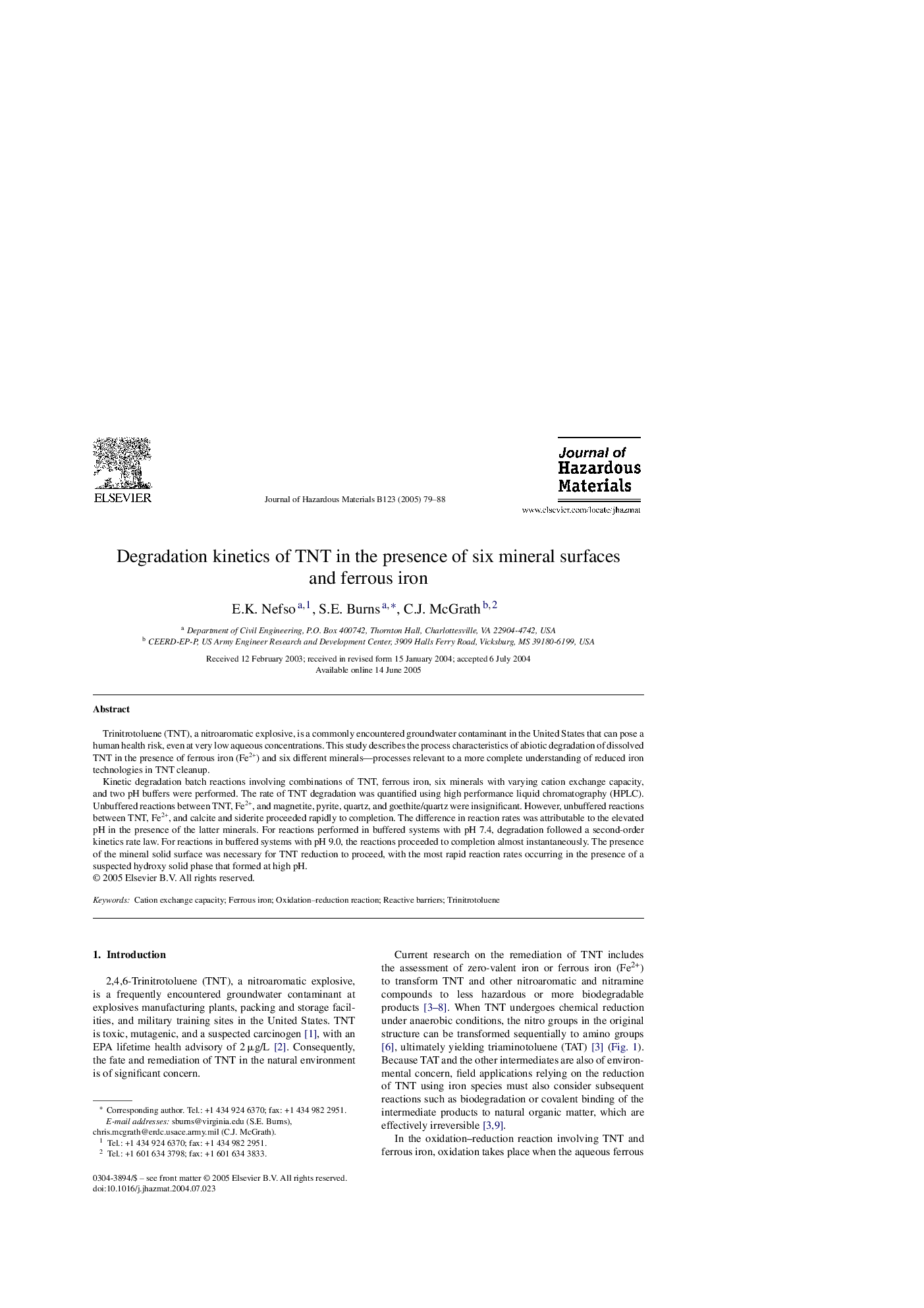| Article ID | Journal | Published Year | Pages | File Type |
|---|---|---|---|---|
| 9674201 | Journal of Hazardous Materials | 2005 | 10 Pages |
Abstract
Kinetic degradation batch reactions involving combinations of TNT, ferrous iron, six minerals with varying cation exchange capacity, and two pH buffers were performed. The rate of TNT degradation was quantified using high performance liquid chromatography (HPLC). Unbuffered reactions between TNT, Fe2+, and magnetite, pyrite, quartz, and goethite/quartz were insignificant. However, unbuffered reactions between TNT, Fe2+, and calcite and siderite proceeded rapidly to completion. The difference in reaction rates was attributable to the elevated pH in the presence of the latter minerals. For reactions performed in buffered systems with pH 7.4, degradation followed a second-order kinetics rate law. For reactions in buffered systems with pH 9.0, the reactions proceeded to completion almost instantaneously. The presence of the mineral solid surface was necessary for TNT reduction to proceed, with the most rapid reaction rates occurring in the presence of a suspected hydroxy solid phase that formed at high pH.
Related Topics
Physical Sciences and Engineering
Chemical Engineering
Chemical Health and Safety
Authors
E.K. Nefso, S.E. Burns, C.J. McGrath,
